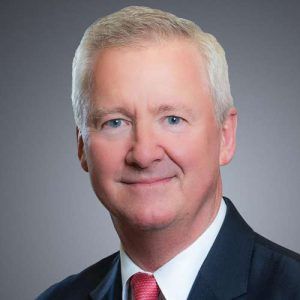I will be candid with you. Your correspondent is most assuredly not a professional journalist. And, being an accountant by trade, creativity isn’t something that comes naturally. Therefore, when composing these investment columns I often rely on some techniques I’ve learned from listening to the professionals. Among these are joke writers, specifically those for nighttime talk shows and Saturday Night Live.
A few of these jokesters have said that several of our recent Commanders-in-Chief are “the gift that keeps on giving.” It occurs to me that, on a decidedly different stage, my version of this font of material is the Federal Open Market Committee (FOMC). The FOMC’s execution of monetary policy according to its dual mandate often results in wild swings in interest rates — and the resultant volatility in bond prices. The historic 2022 (and ongoing) hike in interest rates, while painful for bondholders, has at least produced a yield environment that is worthy of an investment column.
Very Recent Past
In 2020 and 2021, investment brokers were doing their best to help community banks make good decisions about how to invest the mountains of cash that were sitting on their balance sheets, earning next to nothing. In fact, a number of investments that were several years in duration earned well less than fifty basis points (0.5%). This is what happened when short-term rates were anchored at near zero, and the Fed wasn’t “thinking about thinking about” changing anything.
In fact, “The Quest for One Percent” could have been the title of this very column barely a year ago. For example, the five-year Treasury note issued in December 2021 has a coupon of 0.375%. Fifteen-year mortgage-backed securities (MBS) with 1% coupons were trading for a while at prices above 100.00; today they’re worth around 86 cents on the dollar.
Opportunity is Present
So now, as 2023 is well underway, it’s quite easy to buy a bond with a yield of 5% or higher. Thanks to overnight investments being in the high-four percents as of this writing and quite possibly headed to the mid-five percents, even short investments (particularly those with call options attached) can be found with 5.5% returns.
The inverted yield curve needs mentioning. The “2-to-10” part on the curve is reaching historic levels in both the degree and duration of inversion. It has produced a dilemma for portfolio managers. Intuitively, shorter bonds that yield more than longer ones sound sweet. This is a reminder that the bond market is predicting a recession, and it’s sometime soon. Another consequence of the curve’s shape and the rate cycle is that the municipal bond market currently does not offer relative value. Tax-equivalent yields out to 10 years are actually lower than the Treasury curve.
Home-Made Liquidity
Of course, all this 5% yield-opportunity stuff doesn’t help a community bank that has no remaining liquidity to take advantage of it. From the looks of things, that includes a lot of institutions. The FDIC reports that Federal Home Loan Bank advances increased 32% in the fourth quarter of 2022 alone.
One strategy that comes to mind is the advance purchase of investments, financed by borrowed money that will be paid off by future bond portfolio cash flows. The general framework is this:
- Calculate your next two to three years’ cash flows from investments
- Use wholesale funds to finance a matching term and amount
- Use the proceeds to buy bonds with prepayment protection at today’s rates
This makes sense for any financial institution unless it has no borrowing capacity, is leveraged as far as is feasible, or has exposure to rising rates. By all indications, most community banks have room on all these fronts.
Each time the bank pays down borrowings with existing cash flow, the bank is removing low-yielding bonds, relatively high-cost borrowings and is de-levering. All the while, it has greatly boosted its overall bond portfolio yield and hasn’t booked any losses on sales. And at the end of this two- to three-year period, voilà! The bank owns a high-yielding set of bonds, hopefully with unrealized gains, free and clear.
Of course, this isn’t to say that bonds purchased early in 2023 won’t have some dip in their values, at least initially if the FOMC continues to push rates higher. Generally, though, 5% yields have proven to be quite attractive over longer periods. A little creativity can help get those five percenters on board. That’s something even a professional joke writer can’t poke fun at.
ICBA Securities/Stifel 2023 Road Show
ICBA Securities and its exclusive broker Stifel are presenting half-day conferences in several locations in upcoming months. We will be in Boston, MA, on May 2; Kansas City, MO, on May 10; Denver, CO, on June 21; and Atlanta, GA, on June 27. There is no cost to attend, and CPE credit is offered. To register, visit icbasecurities.com.
Economic Insight Live
Dr. Lindsey Piegza, Stifel’s Chief Economist, presents her next quarterly economic outlook webcast on April 6 at 12 pm CST. For more information, contact your Stifel sales representative or Jim Reber.
Jim Reber (jreber@icbasecurities.com) is President and CEO of ICBA Securities, ICBA’s institutional, fixed-income broker-dealer for community banks.









